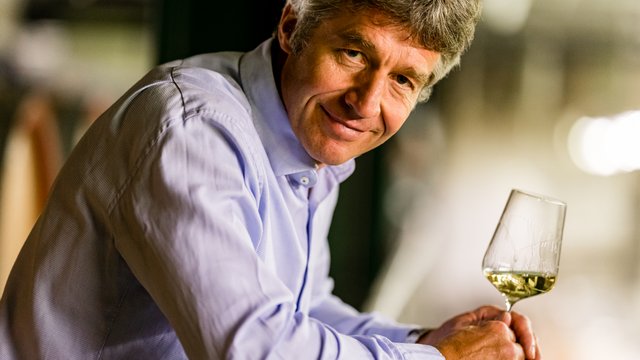Stein
Total area: 78.8 hectares
Weingut Künstler: 3.8 hectares
Vineyard
This gently rising south-facing slope features a mix of pebbly soils, wind-blown sands from the terraces of the Main River and loamy loess atop Tertiary period marl. From this unusual mix of earth come medium-bodied, fruit-driven Riesling wines that radiate charm early in their youth.
Wine: Spirited and Deep
Vines cultivated on "light" sandy soils are encouraged to thrive despite only a moderate supply of water and mineral nutrients. These stresses translate into Stein wines of delicate and stylized beauty, with an elegant structure, moderate acidity and long finish. They are also marked by a fine, lingering fruitiness despite the nearly full fermentation. Sophisticated, subtle fruit aromas underscore the balance between body and acidity. Thanks to the windblown sand in the topsoil and the deeper-lying calcareous marl, the Spätburgunder (Pinot Noir) vines deliver elegant, deep and concentrated wines matching those of Burgundy itself.
Soil
This soil was created from the alluvial sands of the Main River, later borne by the winds of the Ice Age. The sandy and partially pebbly deposits bear witness to its past as a riverbed. During the Ice Age, the Main River carved out several terraces at what is today Hochheim. The sand here is both coarse grained and optimally aerated, providing the vines plenty of space and a nurturing medium to root. The soil warms quickly, encouraging the ripening process. In terms of water and mineral nutrients, however, sand is a true "lightweight," and a sharp contrast from the heavier loamy loess soil and clay marl predominant in Hochheim. The sand and pebble layers cover the ochre loam that itself lies atop the yellow limestone. A deep layer of humus and compost form the surface.

